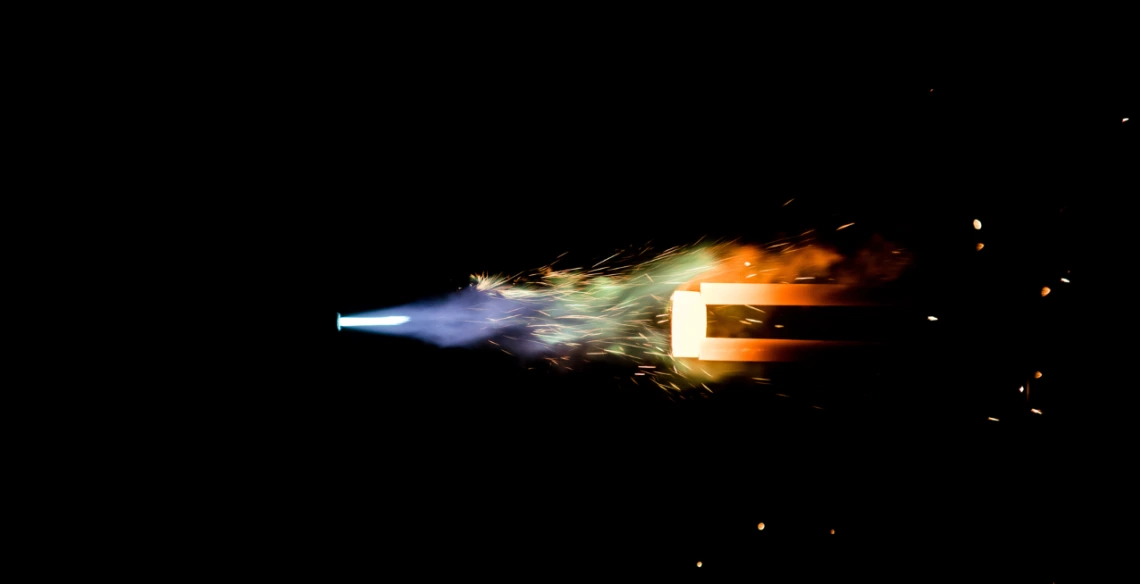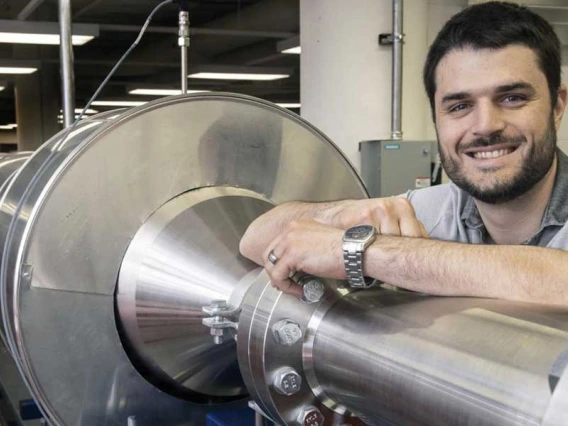UArizona Hypersonic Experts Contributing to $100M Consortium
The University of Arizona is among the lead institutions in an effort to study flight at five times the speed of sound.

Hypersonic flight depends on materials that stand up in extreme environments. Ceramics are tested at ultra-high temperatures in a University of Arizona lab.
The University of Arizona College of Engineering and its Department of Materials Science and Engineering are playing a key role in a $100 million award from the U.S. Department of Defense to establish a national University Consortium for Applied Hypersonics.
More than 60 member universities -- including 11 leadership institutions – will work with government agencies, laboratories and industry to accelerate research and technology for hypersonic flight.
Texas A&M's Engineering Experiment Station -- with guidance from professor Rodney Bowersox, one of the nation's foremost hypersonic researchers -- is managing the five-year contract.
The University of Arizona, which is home to multiple high-speed wind tunnels and facilities for high-temperature materials and manufacturing, is among the leading institutions.
"This is fantastic news," said David W. Hahn, Craig M. Berge Dean of the College of Engineering. "The work is aligned with UArizona's strategic research areas and the college's strengths in materials for extreme environments and aerothermodynamics. It puts us in a leadership position to help shape the future of applied hypersonic research and workforce development."
Erica Corral, an associate professor in the UArizona Department of Materials Science and Engineering and a member of the university's BIO5 Institute, is serving on the initiative's governance board and technical leadership team. Corral, an expert in thermal protection systems, materials and manufacturing, also heads a consortium cross-functional team in manufacturing and serves as deputy director for industry and national laboratory engagement.
"The University of Arizona has significant representation on the consortium," Corral said. "In fact, more than 12 faculty members from across the College of Engineering are contributing members."
In addition to Texas A&M and UArizona, lead institutions for initial operations include the Massachusetts Institute of Technology, University of Minnesota, University of Illinois at Urbana-Champaign, University of Tennessee Space Institute, Morgan State University, California Institute of Technology, Purdue University, University of California, Los Angeles, and Georgia Institute of Technology.
"This first-of-its kind consortium will be critical to advancing hypersonics research and innovation, a key priority of the Department of Defense," said Michael Kratsios, the department's acting under secretary of defense for research and engineering.



